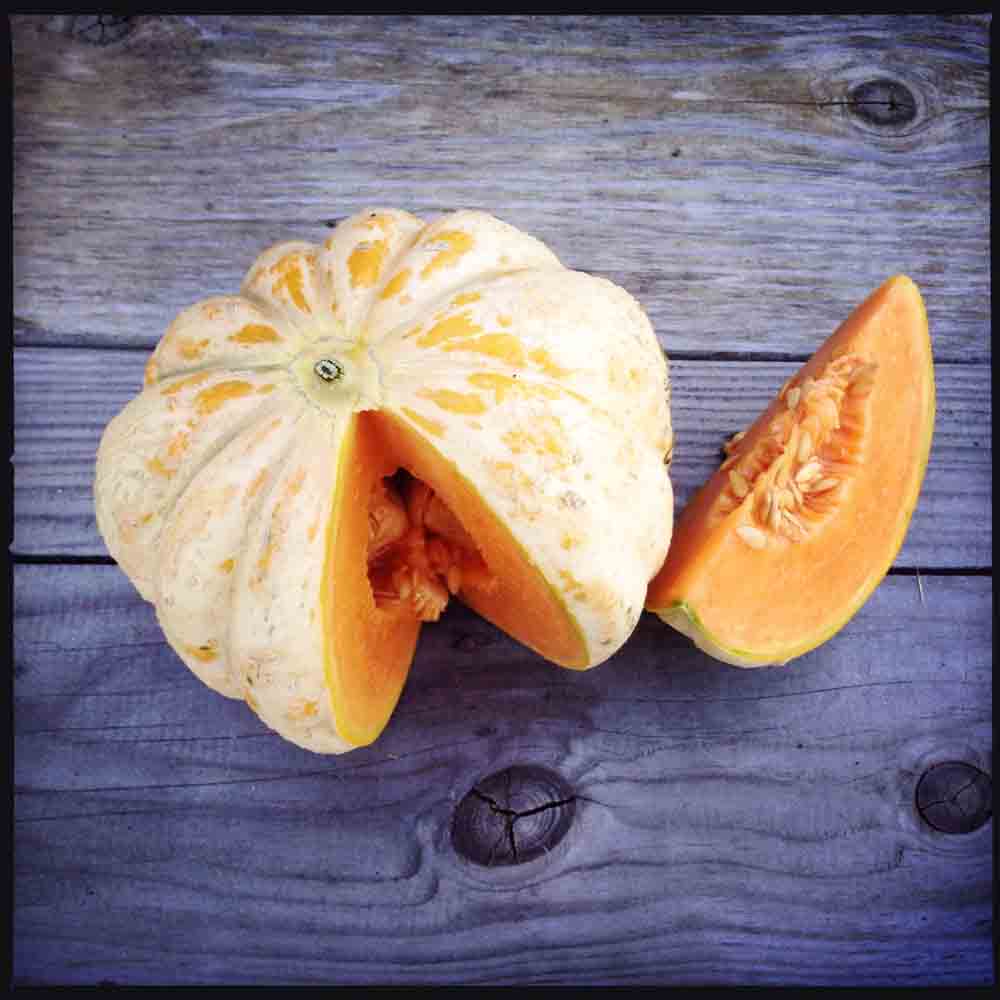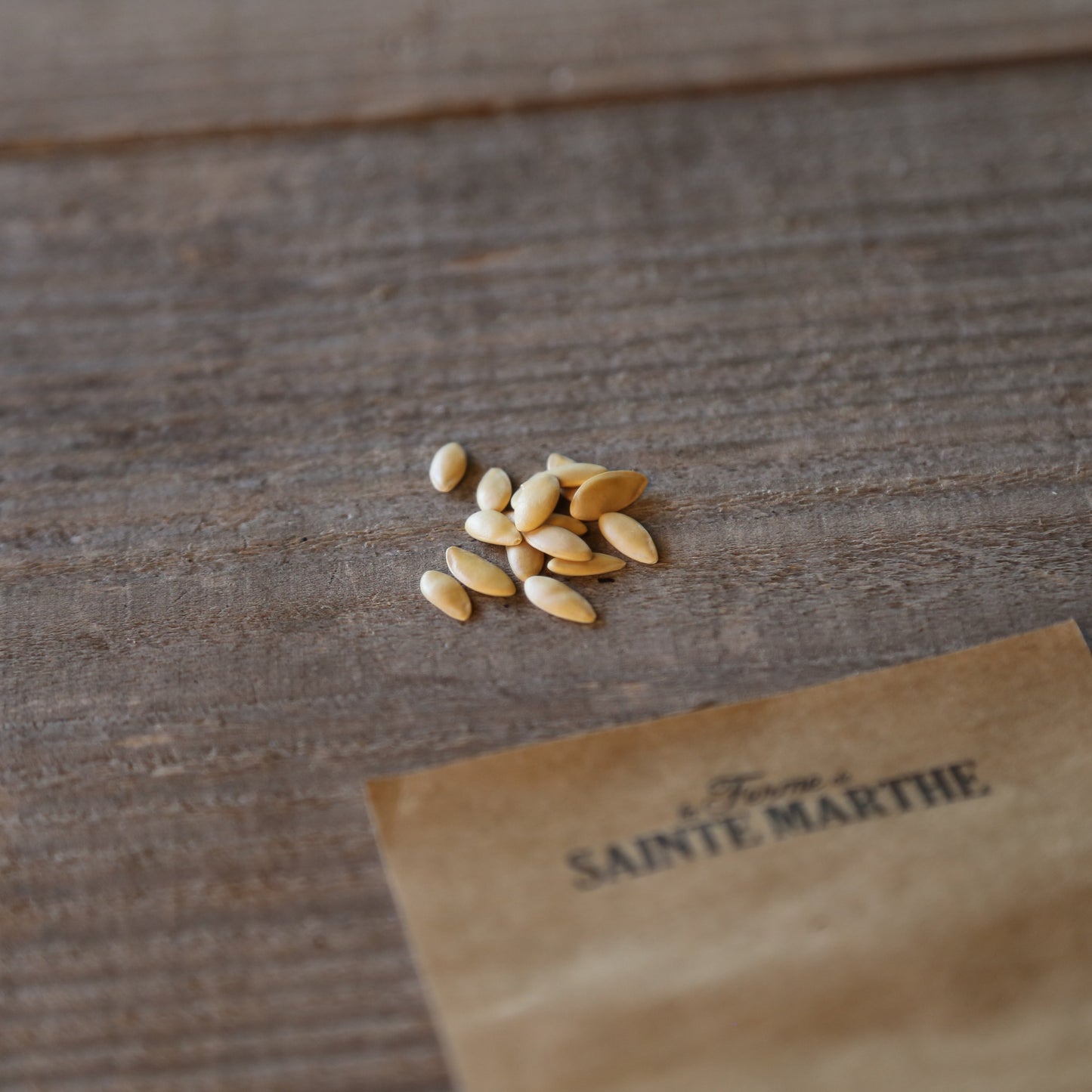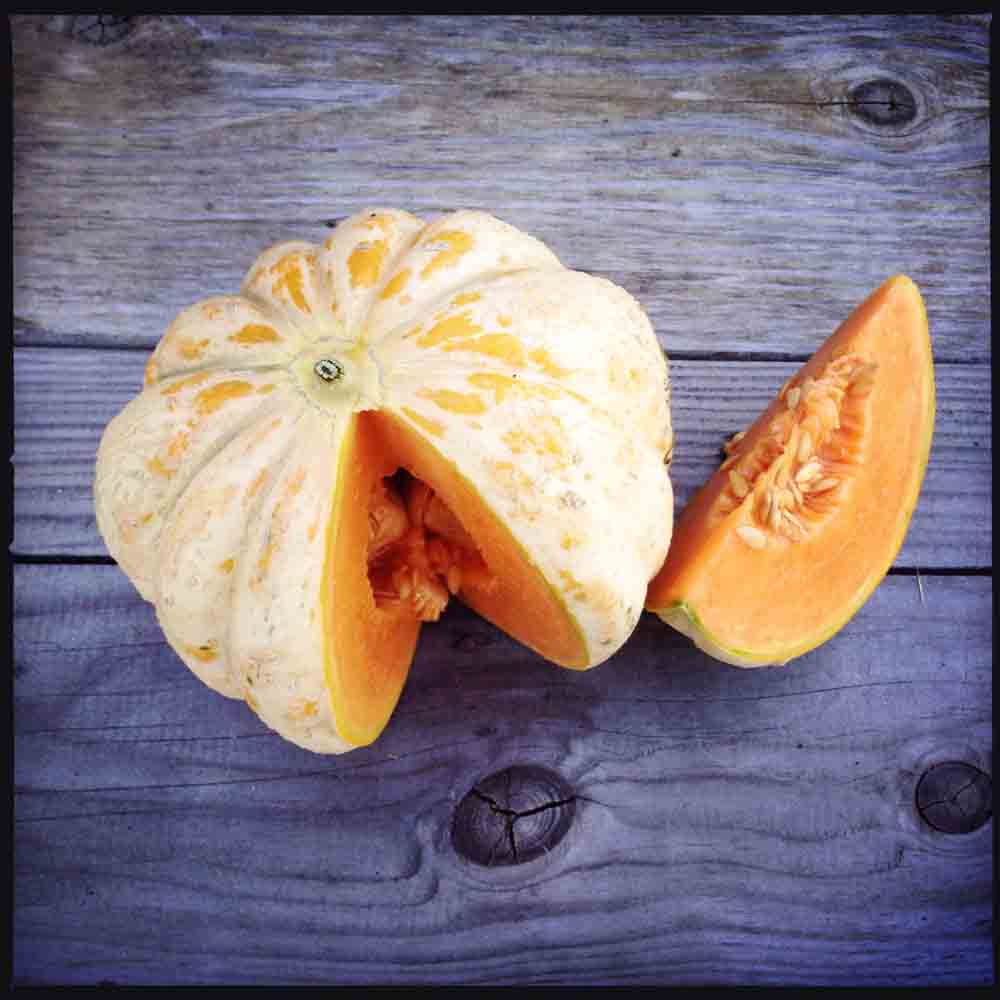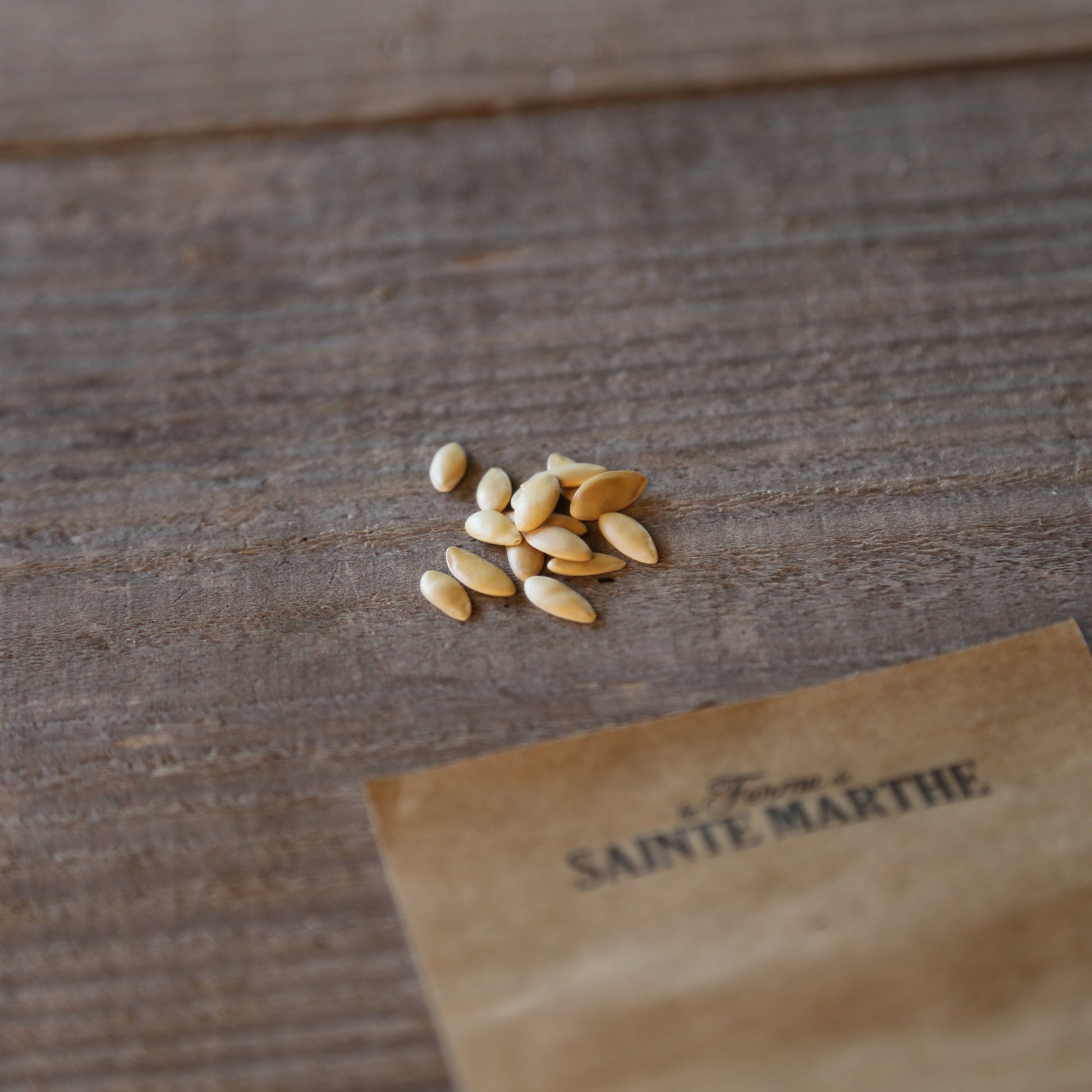MELON DELICE OF THE TABLE AB
Cucumis melo
The Melon Délice de la Table is a very rare old French variety, producing magnificent orange fruits, heavily ribbed and resembling pumpkins. They weigh approximately 450 g . Its flesh, when ripe, is sweet and orange in color.
How to successfully sow melons
Sowing melons in pots
Melons require a lot of heat (between 24 and 35°C ) and light to germinate. The temperature during the day should therefore be within this range and not drop below 15°C at night. Ideally, you should sow your melon seeds in a warm frame or heated greenhouse in March/April and replant them in the garden after the risk of frost has passed, i.e. in mid-May .
Sow 2 or 3 seeds (point down) per pot filled with fine seed compost, 1 cm deep . Water regularly to keep the compost moist (but not soggy) with a sprayer. Place the pots near a window or in a very bright location. As soon as the seedlings appear, their need for light becomes even greater. Make sure they receive maximum sunlight. Remove the weakest plants and keep only the most vigorous ones.
Melon sowing in place
Another solution, more commonly used by people in the south of France or in Mediterranean climates, is to sow directly in the ground.
Space the seeds 80 cm to 1 m between each melon plant. Place 2 to 3 seeds per pocket ( 1.5 cm deep ) and cover with a mixture of sifted garden soil and mature compost. Protect the seedlings with a cloche or a frame at the beginning of the growing season. Keep only the best-looking plant after germination.
Melon planting
Depending on the region, you can plant young melon plants in the garden between April and mid-June . We recommend using a plastic tunnel at the beginning of the growing season to maintain warmth. If you don't live in the south, using a heated greenhouse is highly recommended for growing melons and watermelons.
Plants should be spaced 80 cm to 1 m apart. Melons prefer rich, deep, well-aerated, and sunny soil. Feel free to loosen the soil a little before planting and add compost.
Association with the vegetable garden
Melon pairs well with most vegetables, except cucumber and squash .
Melon cultivation
New melon varieties do not require pruning, except for topping (cutting off the head). As soon as the plant has formed 4 to 6 leaves , prune the main stem. This will quickly achieve good branching and increase fruiting.
Watering should be regular but limited. Flooding your crops could harm the quality of the fruit. Avoid watering the foliage to prevent the appearance of powdery mildew .
Weed in the weeks following planting to avoid competition, then mulch when the soil is very warm, towards the end of June or beginning of July .
Remove any leaves that shade the fruit, as they need maximum light. Place boards or tiles under the fruit to protect it from soil moisture and provide additional warmth.
Melon harvest
Melons are harvested about 2 to 3 months after being transplanted into the garden. Pay attention to the color of the fruit, which generally becomes paler, and the stem, which should begin to detach easily. The aroma also becomes more pronounced.
Do not store them in the refrigerator, as this will alter their aroma. A ripe melon can be recognized by a small crack around the stem, a sign that it is ready to fall off.
Melon diseases
Melon is very susceptible to cucurbit mildew , leaf spot and powdery mildew . It is essential to avoid watering the foliage at the end of the day, especially in hot and humid weather (during stormy periods), because mildew develops on wet foliage.
At the end of the season, place a tile or board under each melon to protect it from humidity.
The main pests of melon are aphids and seedpod flies . To prevent fly attacks, plant when temperatures are high enough to allow rapid plant growth.









